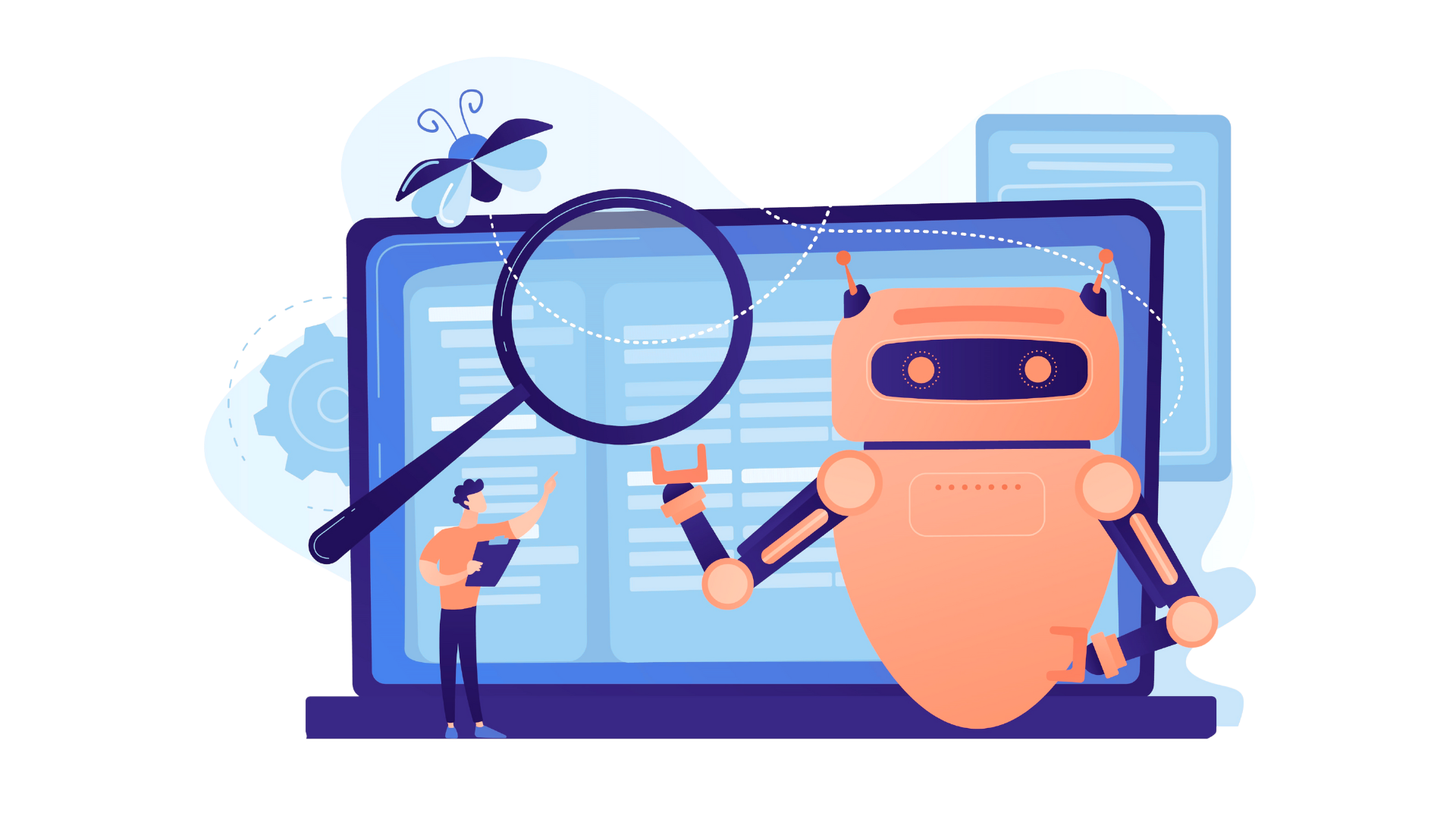Importance of RPA
Three quickly developing technologies that are transforming company operations are robotic process automation (RPA), artificial intelligence (AI), and machine learning (ML). For firms that are growing exponentially and need to meet rising demand, automation is the ideal solution. Robotic Process Automation (RPA) is one such groundbreaking innovation that is becoming more and more popular. This innovative technology is now a major player, changing the way companies handle daily operations and processes.
Robotic Process Automation (RPA) is a technology that automates rule-based, repetitive tasks that were previously completed by humans by using software robots, often known as bots. These robots can simulate tasks carried out by people, like entering into programs, copying and pasting information, and doing calculations. Numerous sectors and roles, including as finance, human resources, customer service, and supply chain management, can benefit from the application of robotic process automation (RPA).
RPA offers a number of advantages, such as enhanced customer satisfaction, cost savings, and higher productivity, accuracy, and efficiency. RPA is a major factor in the digital transformation and is quickly taking over how businesses operate in the future.
Importance of Robotic Process Automation:
Robotic Process Automation (RPA) is becoming increasingly important to company operations due to its capacity to automate repetitive and time-consuming procedures. Businesses can enhance productivity, decrease errors, and boost efficiency by implementing RPA into effect. By eliminating the need for human labor and optimizing procedures, RPA can also help firms save money.
RPA can additionally provide companies useful information and insights, empowering them to make data-driven decisions and enhance their operations. RPA is quickly becoming a necessary tool for accomplishing these objectives as companies come under more and more pressure to increase productivity and cut expenses.
Important Features of RPA:
1. Round-the-clock Operations:
Redefining Business Hours Through Uninterrupted Operations. RPA’s capability to guarantee round-the-clock operations is one of its most notable features. RPA bots have the ability to do tasks continuously and efficiently because they don’t need breaks like their human counterparts. This lowers operating expenses, minimizes errors, and enhances customer service.
2. Adaptability:
Flexible Approaches for Changing Software Environments. RPA can be easily integrated with any software product or application because of its inherent flexibility. RPA bots’ adaptability allows them to carry out a variety of tasks and quickly adjust to shifting company needs. This flexibility reduces monotonous work and validates the investment on RPA technology.
3. Multiple Uses:
Smooth Task Completion on Multiple Platforms. RPA bots demonstrate their adaptability by executing tasks across several applications with ease. RPA bots are excellent at performing high-volume transactional operations such as email logins, data entry, and user interface interactions. The effectiveness of corporate operations is enhanced by this skill.
4. Intelligent Document Process (IDP):
AI-driven document processing improves workflow automation. IDP uses AI, machine learning, and natural language processing to read and comprehend documents. It is a type of business workflow automation. By speeding data collection, this technology guarantees effective information processing.
5. Quick Implementation:
Processes are optimized quickly and efficiently. Implementing RPA allows corporate processes to change rapidly. With the utilization of artificial intelligence and data analysis, businesses can identify outdated processes, propose upgrades, and enhance their general effectiveness. RPA can be quickly and systematically implemented to decrease cycle times, boost productivity, and improve accuracy.
6. Analysis of Emotions (Feedback):
Improving Customer Engagement through Feedback Analysis. The analysis of emotion uses bots with natural language processing capabilities to track and examine user comments on a variety of platforms. This increases interaction with customers and helps pinpoint areas that need work.
7. Process Discovery and Mining:
Process inventorying and prioritizing for effective automation. Process mining and discovery involve locating and evaluating procedures that can be automated. Robotic Process Mining (RPM) is a useful tool for identifying repetitive procedures, clearing the path for successful RPA adoption.
8. Strengthened Safety and Administration:
Ensuring Compliance and Data Security. Through strong audit records, role-based access control (RBAC), and end-to-end encryption, RPA helps to improve security. This guarantees regulatory compliance while simultaneously protecting sensitive data.
9. Hybrid Cloud Deployment:
Automation that is scalable using both cloud and on-premises infrastructure. Scalability and flexibility are offered by hybrid cloud deployment in RPA, which blends on-premises and cloud infrastructure. With this strategy, businesses can customize their automation tasks to meet specific business needs.
10. Hyper Automation:
Smart Automation for the Whole Organization. The goal of hyper automation is to create intelligent automation at the corporate level by combining RPA with AI, machine learning, and BPM. This strategy expands the automation’s potential and enables enterprises to effectively manage more complicated jobs.
11. AI/ ML Integration:
Using machine learning and artificial intelligence to enhance RPA. RPA’s capabilities are enhanced by the combination of machine learning (ML) and artificial intelligence (AI). RPA bots can undertake difficult tasks and learn from data by using AI/ML algorithms. They can also make judgments based on data. Predictive analysis, process improvement, and workflow optimization are all improved by this connection.
12. Collaboration and Integration:
Efficient integration and workflow automation. RPA ensures dependable and safe data sharing by integrating with apps in a simple manner using API integration. Collaboration between artificial intelligence and staff members is facilitated by the adoption of low-code and no-code development, which further accelerates automation procedures.
13. Virtual Duplicates:
Virtually testing and optimizing automation scenarios. RPA uses digital duplicates, which involve building virtual versions of real systems and procedures. By testing and optimizing automation scenarios before to execution, these digital twins help firms reduce possible risks.
14. Self-Healing and Continuous Learning:
Reliability is ensured by automated error correction. RPA’s self-healing feature helps bots identify and fix mistakes on their own, increasing dependability. Bots can perform better over time thanks to continuous learning, which is made possible by machine learning algorithms. This leads to long-term efficiency increases.
15. Imitates human behavior:
Automating Repetitive Tasks with Human-Like Precision. RPA bots efficiently automate repetitive and rule-based operations by mimicking human motions on workstations. Even if RPA bots adhere to preset procedures, the addition of AI makes it possible for them to identify patterns in unstructured data, improving their capacity to carry out tasks in a human-like manner.
16. One Bot, Numerous Functions:
Enhancing Resource Flow with programmable Bots. RPA optimizes resource use by enabling a single bot to be customized to carry out several tasks. Organizations may better schedule work and increase overall productivity with this functionality, which simplifies operations.
Wrapping It Up:
In the corporate sector, robotic process automation, or RPA, is a game-changer because it reduces human error, improves efficiency, and streamlines operations. Not only can RPA save time, but it also frees up employees to concentrate on more creative and strategic elements of their work by automating monotonous tasks. RPA is changing the game when it comes to attaining operational excellence, as seen by its growing use across industries.





